Subscribe to the Newsletter
Your cart is empty
Shop now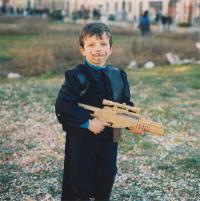
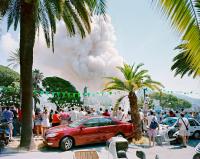
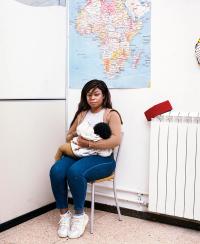
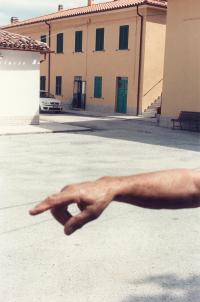
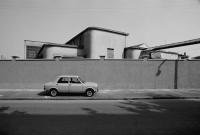
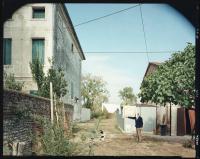
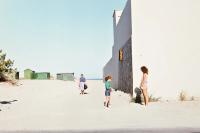
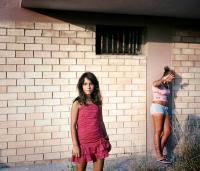
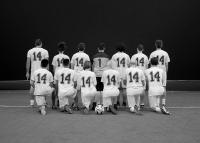









“No Place Like Home”: Italian photography far from the “Bella Italia” cliché
An exhibition travelling through Germany explores the influence of Italian photography since the 1980s on the development of European photographic history
“No Place Like Home” presents the first major survey exhibition of the development of photography in Italy since the 1980s, showing how postwar Italy, born out of the economic boom, found its own credible photographic representation. In its complexity, Italian photography reveals clear parallels with developments elsewhere in Europe and asserts itself confidently within the panorama of photography as an autonomous art form. Curated by Ralph Goertz (Director of IKS Photo Düsseldorf), the exhibition is reconfigured in collaboration with partner institutions Kunsthalle Darmstadt, SCHAUWERK Sindelfingen, and the Draiflessen Collection Mettingen. The first show opens in Darmstadt tomorrow, September 27, 2025 and runs through January 11, 2026.
A foreign romanticization of Italy, the “Bella Italia” cliché has flattened and diminished deeper understandings of Italian culture in a few important ways. The cliché simplifies Italy into a beautiful backdrop for outsiders’ fantasies. It sustains admiration but also prevents people from engaging with Italy’s complexities – its contradictions, its modern cultural production, and its very real social and political struggles. The exhibition “No Place Like Home” pushes back against that simplification. Spanning several generations of Italian photography, it reveals how artists have reclaimed the image of their country from tourism’s glossy surfaces.
Following the economic boom in the 1950s and 1960s and the social unrest of the 1970s, in the shadow of the better-known Neorealism and Arte Povera, autonomous artistic photography also developed, in which Mario Cresci occupied a special position. In the early 1980s, the movement known as “fotografia dei luoghi” (Italian for “photography of places”) marked a turning point. Instead of echoing the picturesque, photographers turned to the everyday landscape as a site of collective identity, insisting on their autonomy as artists rather than suppliers of postcard views. Guido Guidi, Gabriele Basilico, Olivo Barbieri and Luigi Ghirri approached rural and urban spaces to investigate the relationships between people and places.
By the 1990s, as globalization reshaped cities and economies, artists like Marina Ballo Charmet, Paola De Pietri, William Guerrieri, Walter Niedermayr, Armin Linke and Paola Di Bello began charting the loss of identity in urban spaces – a far cry from the timeless beauty projected by Bella Italia. Their images looked directly at alienation, transformation, and the social costs of modernization.
At the turn of the millennium, crises around inequality, migration, and gender equality gave rise to new photographic strategies. Students of Guido Guidi – Marcello Galvani, Francesco Neri, Alessandra Dragoni, Luca Nostri, Allegra Martin and Cesare Fabbri – turned their lenses on contemporary social struggles, expanding the Italian photographic vocabulary well beyond landscapes and into critical social practice. Another wave of photographers began experimenting with new narrative forms rooted in the traditions of 1970s reportage. In the socially critical works of Michela Palermo, Nicola Lo Calzo, Giulia Iacolutti, Davide Degano, Michele Cera, Michele Borzoni, and Simone Donati, one can trace a clear kinship with the Folkwang School, echoing figures like Joachim Brohm and Petra Wittmar. At the same time, artists including Andrea Botto, Maurizio Montagna, Michele Buda, and Alessandro Ruzzier have built their practices on postmodernist models while also drawing on the legacy of “objective photography” associated with Bernd and Hilla Becher at the Düsseldorf Art Academy.
In the work of a younger generation of Italian photographers – including Francesca Iovene, Carmen Colombo, Tomaso Clavarino, Giulia Agostini, and Greif Alumni Davide Degano, Piero Percoco, Iacopo Pasqui, and Federico Clavarino – the focus has shifted away from public space as a marker of collective identity. Instead, these artists experiment with looser narrative structures that revolve around individuality, community, and diversity. Their often biographical series abandon traditional linear storytelling in favor of sequences of images treated as symbolic fragments, charged with the values and questions of their generation. In doing so, they interrogate what belonging and origin mean on a personal level. Alongside them, Rachele Maistrello, Sofia Masini, Giulia Iacolutti, Sara Palmieri, and Greif Alumni Marco Marzocchi and Fabio Barile explore more explicitly autobiographical or even “archaeological” approaches, digging into memory, history, and self as raw material.
Rather than basking in a timeless, beautiful Italy, the collection on show insists on representing an Italy that is contradictory, diverse, and alive to its own complexities. In doing so, “No Place Like Home” doesn’t just challenge a stereotype but reclaims the visual imagination of Italy for those who live within it and records all the beauty and the lows of a country so overlooked by foreigners yet so little known.